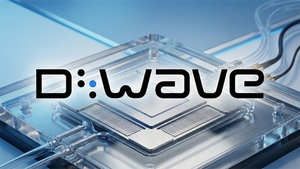AP3 Generative AI KaiSR model globally assesses drug effects on the entire intracellular protein signaling network for optimal drug design and precision medicine development
Favorable ACR-2316 preclinical data, demonstrating its differentiated and superior pathway effects versus benchmark WEE1 and PKMYT1 inhibitors consistent with prior observations
Company to report initial clinical data for ACR-2316 in AP3-predicted tumor types later this year; clinical activity and confirmed partial response observed during dose escalation
WATERTOWN, Mass., Oct. 22, 2025 (GLOBE NEWSWIRE) -- Acrivon Therapeutics, Inc. (“Acrivon” or “Acrivon Therapeutics”) (Nasdaq: ACRV), a clinical stage biotechnology company discovering and developing precision medicines utilizing its proprietary Generative Phosphoproteomics AP3 (Acrivon Predictive Precision Proteomics) platform designed to interpret and quantify compound specific, drug-regulated pathway activity levels inside the intact cell in an unbiased and actionable manner, today announced three presentations at the AACR-NCI-EORTC International Conference on Molecular Targets and Cancer Therapeutics taking place from October 22-26, 2025 in Boston, MA.
“At this year’s AACR-NCI-EORTC meeting, we are excited to present a powerful set of posters that illustrate our unique and data-driven approach to precision medicine development and generative AI drug discovery,” said Kristina Masson, Ph.D., M.B.A., co-founder and executive vice president of business operations at Acrivon and president and CEO of the company´s research subsidiary Acrivon AB in Lund, Sweden. “Our presentations feature our innovative AP3 KaiSR ensemble model, which expands our ability to rationally design drugs optimized for desirable activity on biologically relevant pathways in the intact cell, as well as robust mechanistic data for ACR-2316 including pathway analyses that underpin the superior preclinical activity of the asset. We look forward to sharing initial clinical data from our Phase 1 study of ACR-2316 later this year, building upon the disclosed clinical activity already observed across AP3-predicted solid tumor types during the dose-escalation phase."
| Details for Presentations | |
| Poster Title: | Global pharmacodynamic effects uncovered with AP3 phosphoproteomic profiling of novel WEE1/PKMYT1 inhibitor ACR-2316 reveals the critical importance of PLK1 for ACR-2316’s superior preclinical activity and differentiated mechanism of action |
| Session: | Poster Session A |
| Date and Time: | Thursday, October 23 | 12:30-4:00 p.m. ET |
| Poster Title: | Acrivon Therapeutics’ generative AI ensemble model (KaiSR) accurately predicts and expands proprietary, actionable kinase-substrate relationships globally for the human kinome |
| Session: | Poster Session C |
| Date and Time: | Saturday, October 25 | 12:30-4:00 p.m. ET |
| Poster Title: | ACR-2316 is a novel, differentiated, clinical-stage WEE1/PKMYT1 inhibitor designed by Acrivon’s Generative Phosphoproteomics AP3 Platform for optimal pro-apoptotic pathway effects in tumor cells resulting in superior preclinical activity |
| Session: | Poster Session C |
| Date and Time: | Saturday, October 25 | 12:30-4:00 p.m. ET |
The posters will be available on Acrivon’s website in the “Science and Publications” section upon or shortly after presentation at the AACR-NCI-EORTC International Conference on Molecular Targets and Cancer Therapeutics.
About Acrivon Therapeutics
Acrivon is a clinical stage biopharmaceutical company discovering and developing precision medicines utilizing its proprietary Generative Phosphoproteomics AP3 platform. The platform allows the company to interpret and quantify compound specific, drug-regulated pathway activity levels inside the intact cell in an unbiased manner, yielding terabytes of proprietary data and delivering rapid, actionable insights. The Generative Phosphoproteomics AP3 platform is comprised of a growing suite of powerful, internally-developed tools, including the AP3 Data Portal, converting multimodal data into structured data for generative AI analyses, the AP3 KaiSR Kinase Substrate Relationship Predictor, and the AP3 Interactome. These distinctive capabilities enable the company to go beyond the limitations of traditional drug discovery, as well as current AI-based target-centric drug discovery, and rapidly design highly differentiated compounds with desirable pathway effects through intracellular protein network analyses and advance these agents into the clinic for streamlined development.
Acrivon is currently advancing its lead program, ACR-368 (also known as prexasertib), a selective small molecule inhibitor targeting CHK1 and CHK2 in a potentially registrational Phase 2b trial for endometrial cancer. The company has received Fast Track designation from the Food and Drug Administration, or FDA, for the investigation of ACR-368 as a monotherapy based on OncoSignature-predicted sensitivity in patients with endometrial cancer. The FDA has granted a Breakthrough Device designation for the ACR-368 OncoSignature assay for the identification of patients with endometrial cancer who may benefit from ACR-368 treatment. In addition, the company has initiated a third arm to the Phase 2b study without the need for a pre-treatment biopsy to evaluate ACR-368 with ultra-low-dose gemcitabine (ULDG) sensitization in all-comer, biomarker-unselected 2nd line patients with endometrial cancer who have all received prior treatment with chemotherapy and anti-PD-1.
Acrivon is also leveraging its proprietary Generative Phosphoproteomics AP3 platform for developing its co-crystallography-driven, internally discovered pipeline programs. These include ACR-2316, the company’s second clinical stage asset, a novel, potent, selective WEE1/PKMYT1 inhibitor designed for superior single-agent activity through strong activation of not only CDK1 and CDK2, but also of PLK1 to drive pro-apoptotic cell death, as observed in preclinical studies against benchmark inhibitors. The Phase 1 trial of ACR-2316 is advancing with enrollment in the first three dose-escalation cohorts completed. Drug target engagement was observed at DL1 and 2 using the company’s clinical mass spectrometry-based AP3 profiling, with evidence of approximate dose proportionality based on plasma pharmacokinetic analyses, and initial clinical activity and confirmed partial response. In addition, the company is advancing a preclinical program directed against an undisclosed cell cycle regulatory target.
Forward-Looking Statements
This press release includes certain disclosures that contain “forward-looking statements” within the meaning of the Private Securities Litigation Reform Act of 1995 about us and our industry that involve substantial risks and uncertainties. All statements other than statements of historical facts contained in this press release, including statements regarding our preclinical and clinical results, business strategy and plans and objectives of management for future operations, are forward-looking statements. In some cases, you can identify forward-looking statements because they contain words such as “anticipate,” “believe,” “contemplate,” “continue,” “could,” “estimate,” “expect,” “intend,” “may,” “plan,” “potential,” “predict,” “project,” “should,” “target,” “will,” or “would” or the negative of these words or other similar terms or expressions. Forward-looking statements are based on Acrivon’s current expectations and are subject to inherent uncertainties, risks and assumptions that are difficult to predict. Factors that could cause actual results to differ include, but are not limited to, risks and uncertainties that are described more fully in the section titled “Risk Factors” in our reports filed with the Securities and Exchange Commission. Forward-looking statements contained in this press release are made as of this date, and Acrivon undertakes no duty to update such information except as required under applicable law.
Investor and Media Contacts:
Adam D. Levy, Ph.D., M.B.A.
alevy@acrivon.com
Alexandra Santos
asantos@wheelhouselsa.com






